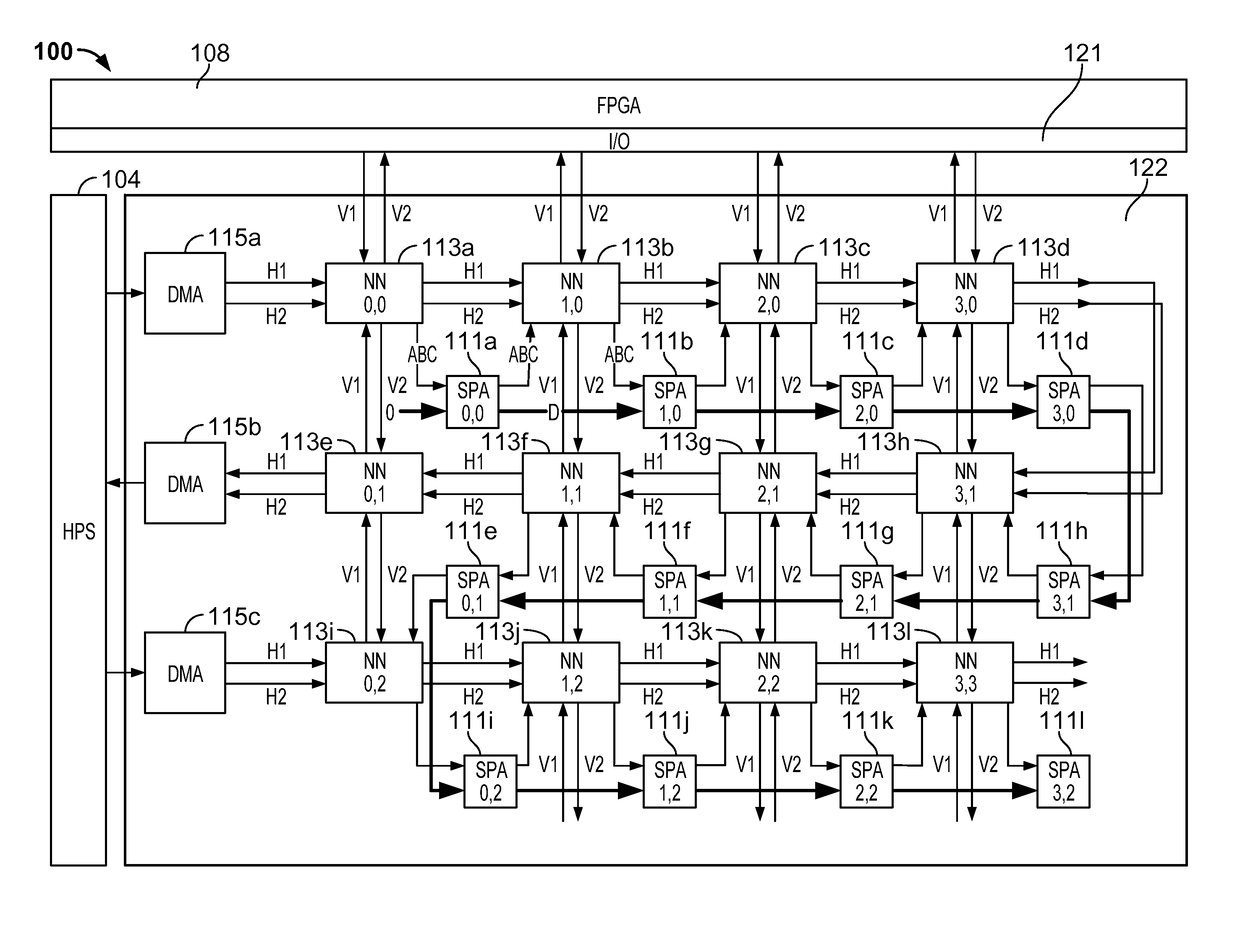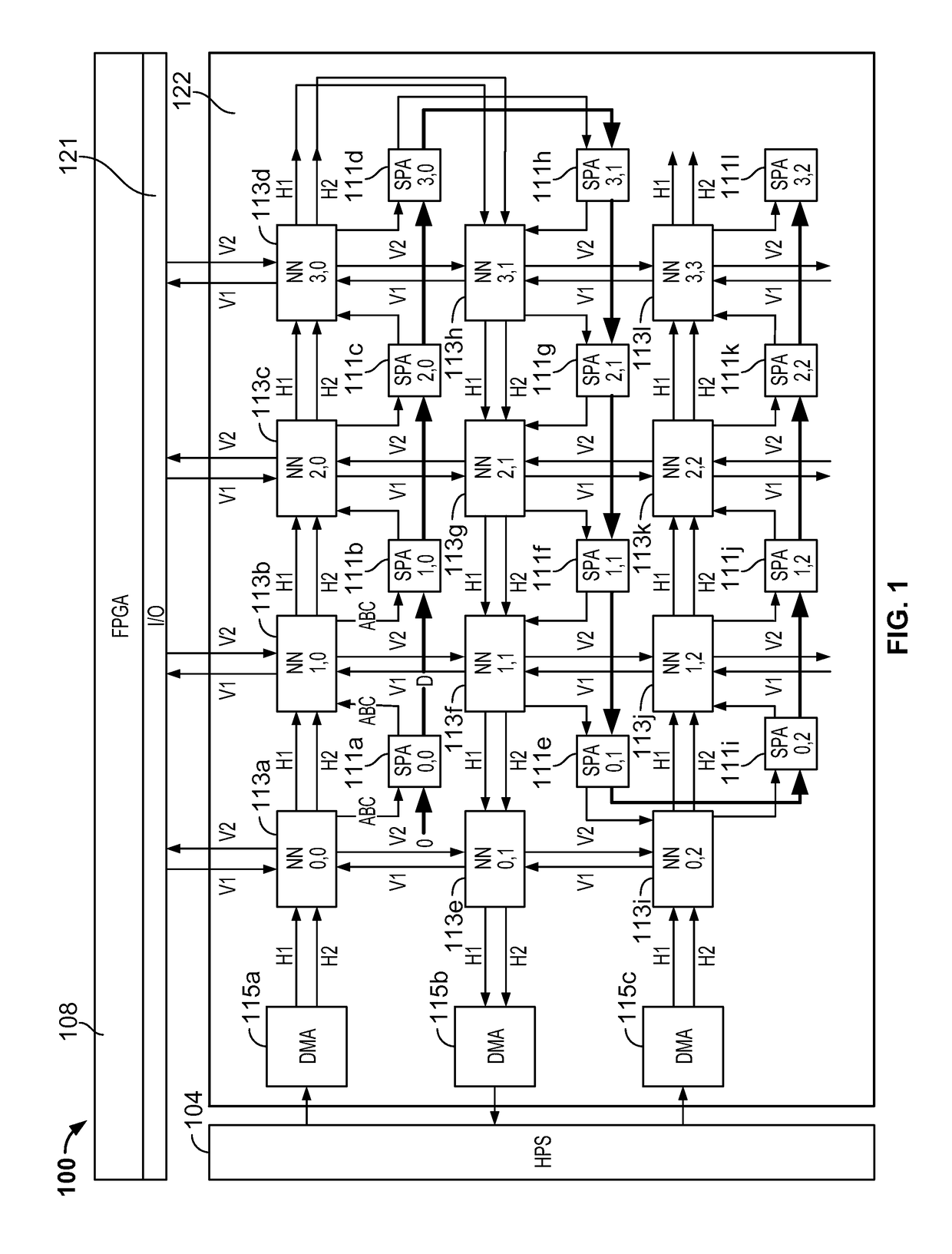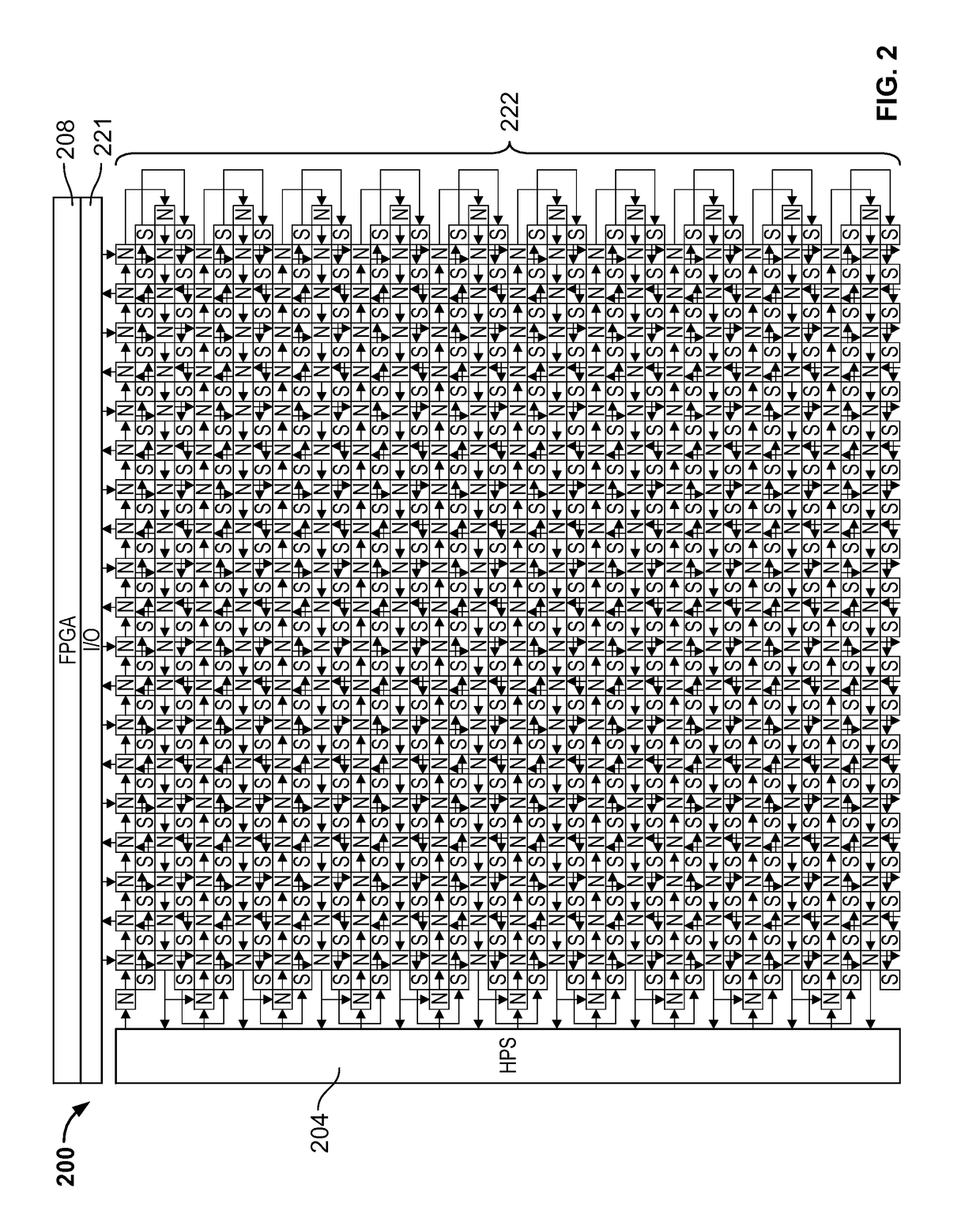Hybrid architecture for signal processing and signal processing accelerator
a hybrid architecture and signal processing technology, applied in the direction of logic circuits, pulse techniques, instruments using specific components, etc., can solve the problems of not cost-efficient to make a family of fpgas with too many different members and all the specialized blocks used
- Summary
- Abstract
- Description
- Claims
- Application Information
AI Technical Summary
Benefits of technology
Problems solved by technology
Method used
Image
Examples
Embodiment Construction
[0028]The systems and methods of the present invention include a hybrid architecture of an integrated circuit for signal processing. Different types of embedded features may operate in concert, connected by specially-purposed busses, such as network-on-a-chip (NoC) systems. Additionally or alternatively, one feature may be connected in a configurable manner to another feature having the same type, thereby constructing a more powerful application-specific accelerator.
[0029]It is generally desirable to create integrated circuits that are cheaper and consume less power, while being able to provide desired functionality and maintain a level of programmability. The hybrid architecture described herein uses a programmable architecture that includes a mix of programmable elements, such as FPGAs, accelerators, and processors, for example. Essentially, the hybrid architecture described herein has the low cost and low power consumption properties of ASICs, but has the programmability of FPGAs...
PUM
 Login to View More
Login to View More Abstract
Description
Claims
Application Information
 Login to View More
Login to View More - R&D
- Intellectual Property
- Life Sciences
- Materials
- Tech Scout
- Unparalleled Data Quality
- Higher Quality Content
- 60% Fewer Hallucinations
Browse by: Latest US Patents, China's latest patents, Technical Efficacy Thesaurus, Application Domain, Technology Topic, Popular Technical Reports.
© 2025 PatSnap. All rights reserved.Legal|Privacy policy|Modern Slavery Act Transparency Statement|Sitemap|About US| Contact US: help@patsnap.com



